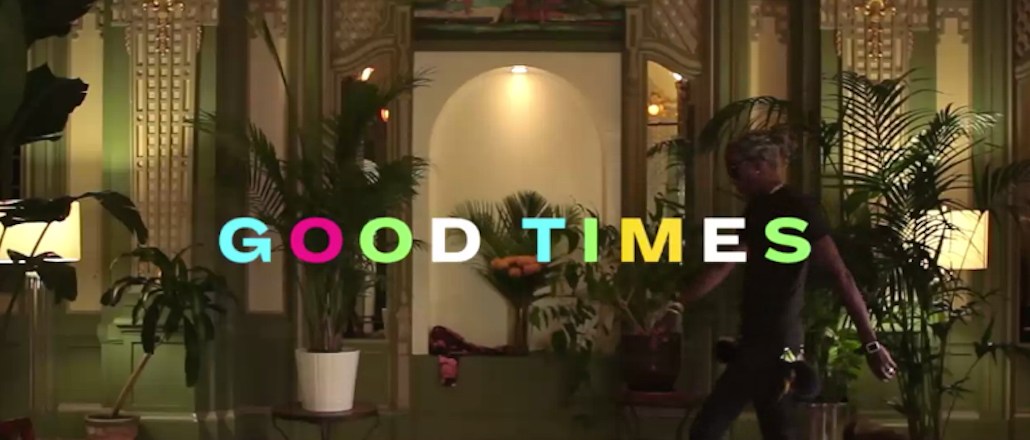Connect with execs from The New York Times, TIME, Dotdash Meredith and many more

An online Vogue article that features the best of New York Fashion Week is one of the magazine’s best digital efforts on its website.
Published on Sept. 23, the feature, written by Cass Bird and titled “Good Times: The Best of New York Fashion Week Spring 2016,” goes inside an end-of-fashion-week party hosted by Vogue and Young Thug and attended by a cast of young celebrities with huge Instagram followings: Bella Hadid, Lucky Blue Smith, Emily Ratajkowski and Irina Shayk, to name a few.
The stars wore off-the-runway pieces from spring 2016 collections by designers including Alexander Wang, Michael Kors, Oscar de la Renta and more. The featured clothing paired with the backdrop — the opulent Ladies’ Tea Room at the Prince George Ballroom, littered as though an excellent party had just ended — would have teamed up for an excellent print Vogue spread, one fashion followers have come to expect in the magazine’s pages.
Instead, the editorial team designed the feature as digital-first, trading all still photos for full-screen looping video clips. As a result, the videos gave readers a peek into the photoshoot party, demonstrated how the designer clothing moves, and packed a range of poses and facial expressions into one overarching shot.
“The “Best of New York Fashion Week Spring 2016” was all about doing the most current, cool, and charming collections story possible on the final day of Fashion Week,” said Sally Singer, Vogue’s creative digital director. Vogue declined to comment on how many visitors the features has gotten so far.
The feature caught the attention of Adam Wray, Redef’s fashion curator, who said it was the first time he felt that Vogue had done something that seemed thought-out from a fully digital perspective.
“It seems like they really got the digital audience, and understood how to properly leverage the site,” said Wray. “In the past, a lot of the website has not been super user friendly, and there’s not a lot of consistency. This one, though — the way it was cast, and the way it was organized — it feels like they’re trying to reach a bit of a different audience.”
“Different,” as in younger. Rather than turning a print feature into an online article, as Vogue usually does on its website, the magazine prioritized digital, creating a full-length music video to accompany the article and choosing a cast well known by the Snapchat generation. However, an older audience can be appreciative of the sophisticated online layout, according to Alex Proba, design director at the agency Mother New York, which recently worked with Target for a digitally connected spread in Vogue’s September issue.
“Elements such as integrated full screen videos, infinite scrolling, clean and simple responsive design and layout acts as a huge update for the Vogue.com experience,” said Proba. “It allows Vogue to break out of the norm and take the lead in the non-traditional fashion magazine sector.”

While both Proba and Wray commended Vogue for such a digitally forward feature, the site still faltered in one area where it could have stepped up: shoppability. Each model’s outfit is accompanied by a set of details, but the presentation is scattered. Most, like an outfit by Michael Kors, are fashioned in the old-school magazine way (designer name, city and telephone number), others, like Hood By Air, linked to the designer’s website; others still, like Alexander Wang, linked to a slideshow of the runway pieces elsewhere on Vogue.com, which features a “Shop the Look” button linked to off-the-runway e-commerce store Moda Operandi.
“There’s still room for improvement in terms of consistency,” said Wray.
According to Vogue’s Singer, this spread was a “test,” signaling that there could be more of its nature to come.
“It was a test of our ability to deliver original fashion stories to our readers with speed and relevance, and it was just so much fun,” said Singer. “In a week of major parties, we threw the funkiest one of all.”
More in Media

Three publishers’ workforce diversity reports show DEI efforts remain sluggish
Overall, staff diversity at The New York Times, Hearst and Condé Nast has either marginally improved or stalled in 2024, according to their annual workforce diversity data this year.

Retail media meets publishing: News UK, Future and Ocado tap clean room tech for smarter data targeting
News UK, The Independent, Immediate Media and Future are teaming up with retail media network Ocado to test clean room-powered data matching.

From sidelines to spotlight: Esports events are putting creators center stage
Esports events’ embrace of content creators reflects advertisers’ changing priorities across both gaming and the wider culture. In the past, marketers viewed esports as one of the best ways to reach gamers. In 2025, brands are instead prioritizing creators in their outreach to audiences across demographics and interest areas, including gaming.





